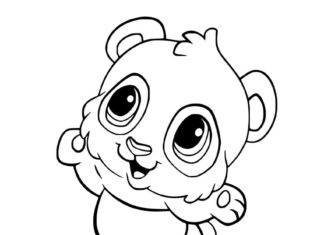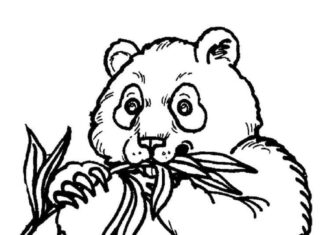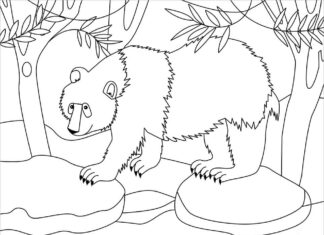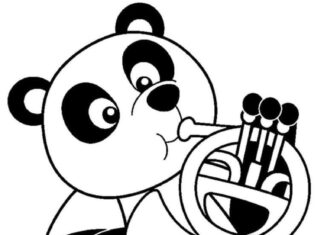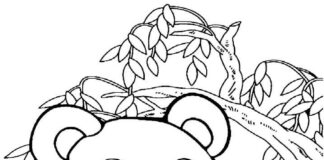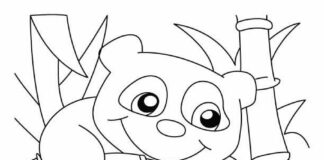Great panda (giant panda): It is a distinctive animal native to China, recognizable by its white fur with black spots on its eyes, ears, paws and arms. The panda is a herbivore, and its main food is bamboo leaves. Despite having a build typical of predators, pandas lead a peaceful lifestyle. They are an endangered species and have become a symbol of global conservation efforts. They mostly spend their time eating bamboo and sleeping.
Panda Coloring Pages
Information
- Origins: Giant pandas are native to China, and their natural habitat is mountainous mist forests in Sichuan, Shaanxi and Gansu provinces.
- Diet: Although pandas' ancestors were carnivores, modern giant pandas are almost exclusively herbivores. Approximately 99% of their diet is bamboo, although they sometimes eat small animals or birds as well.
- Anatomy: They have strong jaws and jaw muscles that allow them to crush hard-to-bite bamboo shoots.
- Reproduction: Pandas have a very short fecundity period, lasting only two to three days a year. The cubs are born small and helpless, with their eyes open only after a few weeks of life.
- Protection status: The giant panda is an endangered species. Great efforts, mainly from China, are being made to protect these animals and their habitat.
- Behavior: Pandas are loners. They spend most of the day eating bamboo, which provides them with little energy, so they sleep a lot.
- Communications: Pandas communicate using vocalizations, gestures and smells. They have more than a dozen different sounds for communication.
- Life expectancy: In captivity, they can live up to 30 years, while in the wild their life expectancy is 20 years.
- A symbol of protection: The giant panda has become a global symbol of environmental protection and is the main logo of the World Wildlife Fund (WWF).
- Fur color: There are various theories on why pandas have white and black fur. Some suggest that it helps them camouflage themselves in snowy environments, while others claim that the coloration helps them with thermoregulation.
Trivia
- Six fingers: Pandas have a unique "sixth toe" on their front paws. It is a modified wrist appendage that helps them grasp bamboo shoots while eating.
- Carnivorous origin: Although modern pandas are primarily herbivores, their ancestors were carnivores. The giant panda still has predatory teeth and digestive system.
- Thermoregulation: It is thought that the panda's contrasting black-and-white coloration may help with thermoregulation, with the white areas reflecting heat and the black areas absorbing it.
- Rare reproduction: Pandas breed infrequently, both in captivity and in the wild. This has to do with their short fecundity period and extreme selectivity in choosing a mate.
- Not just bamboo: Although pandas eat mainly bamboo, they are capable of eating meat. In the wild, they sometimes eat small animals such as birds and rodents.
- Significance in culture: In Chinese culture, the panda is a symbol of calmness and good-naturedness.
- Variable diet: There are many species of bamboo, but not all are edible to pandas. Pandas choose specific species and change their preferences depending on the season.
- Communication by smell: Pandas use scent glands to mark territory and communicate with other pandas.
- Sensitive hearing: Pandas have very sensitive hearing and are able to detect the quietest sounds in their environment.
- Panda red: Although the name "panda" is often associated with the giant panda, there is also the red panda, which is much smaller and has russet, reddish fur. Despite their similar name, the two species are not closely related.

